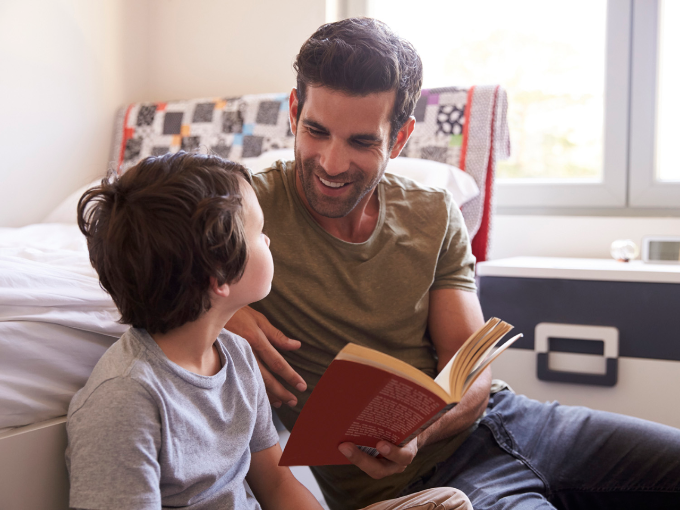
You might be eager to make the leap from picture books to chapter books during story time with your kids — after all, you probably have favorites from your own childhood!
It’s a good idea: Reading chapter books aloud to your child introduces them to equally enriching yet more complex storytelling that helps develop inferential reading skills. The great news is that you can start reading early chapter books as soon as preschool, says Karen Baicker, executive director of the Yale Child Study Center-Scholastic Collaborative for Child & Family Resilience and publisher for Family and Community Engagement (FACE) at Scholastic.
“You are building listening skills and the awareness of an arc of storytelling,” says Baicker. “Introducing chapter books will also excite young children who have seen their older siblings reading them.”
As you make the transition to chapter books with your child, here are four things to keep in mind.
Want even more book and reading ideas? Sign up for our Scholastic Parents newsletter.
1. Consider age-appropriateness in more ways than one.
It’s not just about watching out for language or violence. For instance, unless your child is in third grade or above, you should probably wait on a series like Harry Potter.
“A lot of parents want to jump right into the Harry Potter books when their kids are in first or second grade,” says reading specialist Brooke MacKenzie. “But I would wait, unless your child has a really strong ability to visualize, because it’s such an intricate fantasy world.”
MacKenzie recommends chapter books targeted at early readers instead. Branches books are great for this, because they’re specifically designed to help kids transition from picture books to chapter books.
With slightly older children, you can’t go wrong with classics. For inspiration, check out 25 timeless chapter books every kid should read at least once.
2. Don’t pack up the picture books completely.
Since young children are used to picture books and still rely on images to help them visualize the story, don’t make the transition to chapter books too quickly. “With students in first and second grade, it’s important to continue reading picture books as well, even though they’re becoming more independent readers,” says MacKenzie.
When you are reading a chapter book, help your child create an image in their minds based on the words. “Stop and ask them what they picture something looked like, and model using your own imagination,” says Baicker.
3. Make it interactive.
Just like you would for picture books, have conversations with your child about the plot and characters, and encourage them to make predictions about what will happen next.
MacKenzie also suggests vocalizing your own thoughts about the story (such as “Hmm, I wonder what he’s nervous about?”) to model the think-aloud process. This will help deepen their reading comprehension and engagement in the story.
4. Continue story time with your kids as they grow older!
Read out loud to your children through at least fourth or fifth grade.
“Parents often want kids to transition to reading to themselves as they become more independent readers, particularly in third grade,” says MacKenzie. “But it’s still important to read to the child, because it exposes them to books they might not be able to read or comprehend on their own.”
Source: Scholastic


